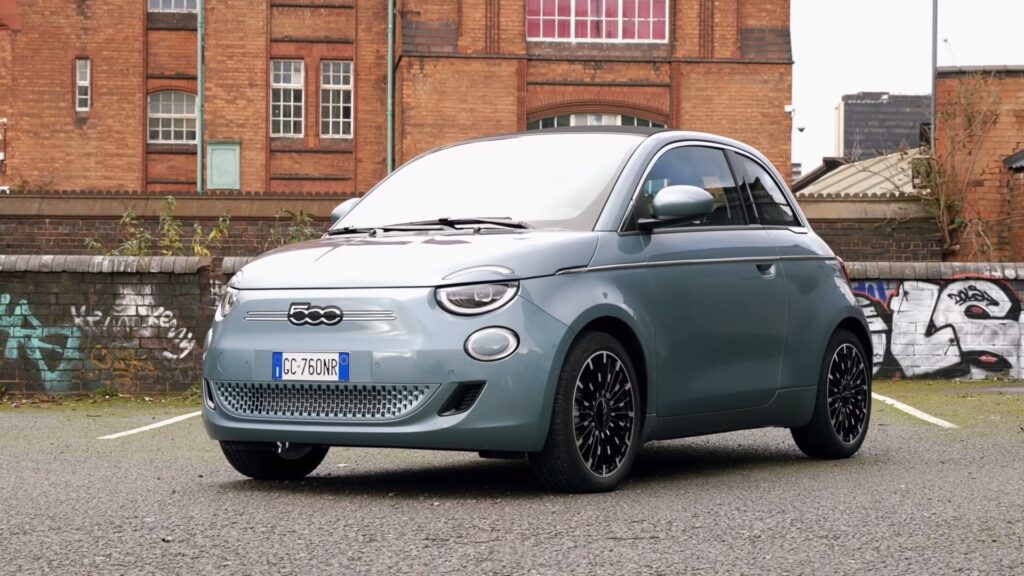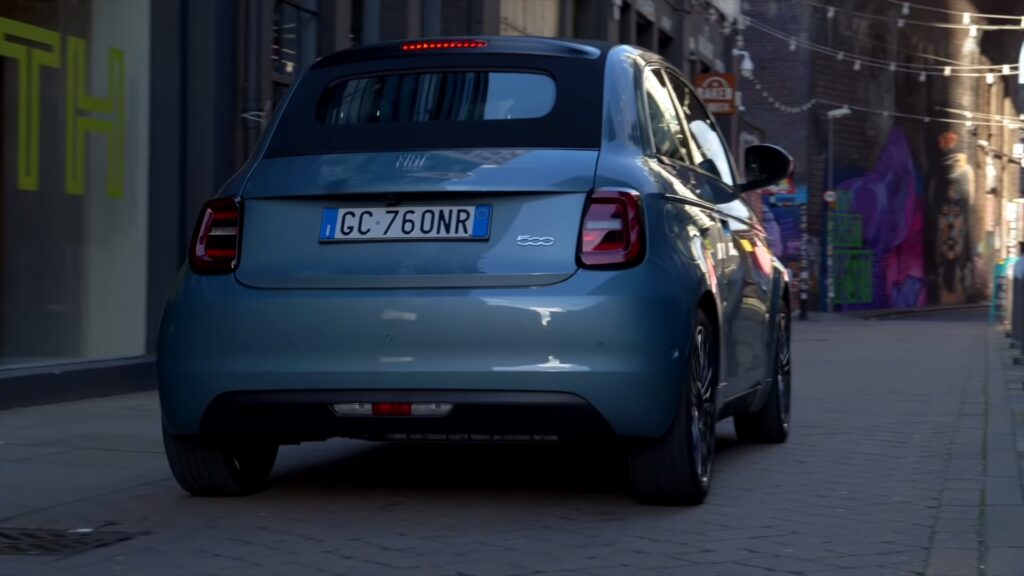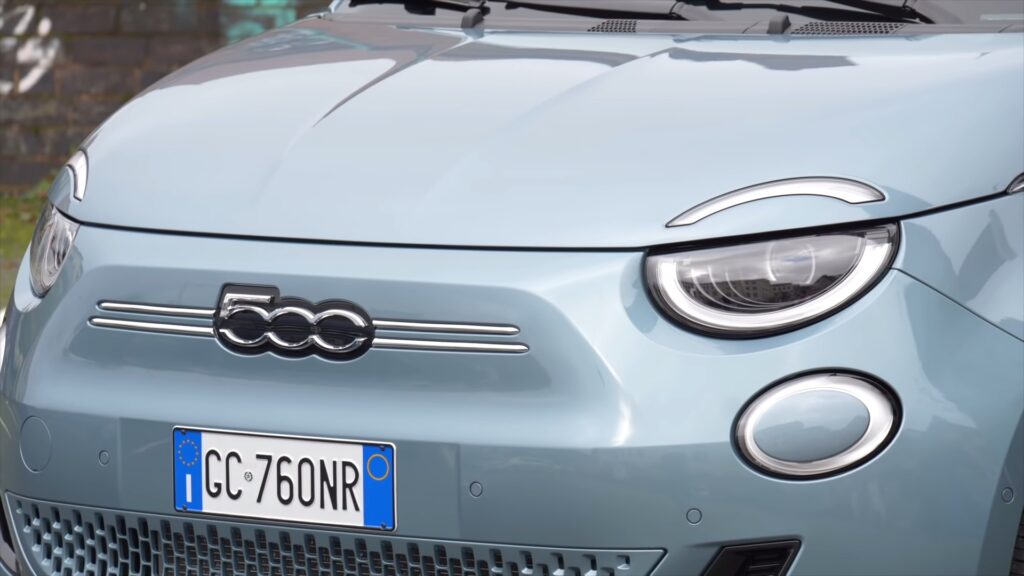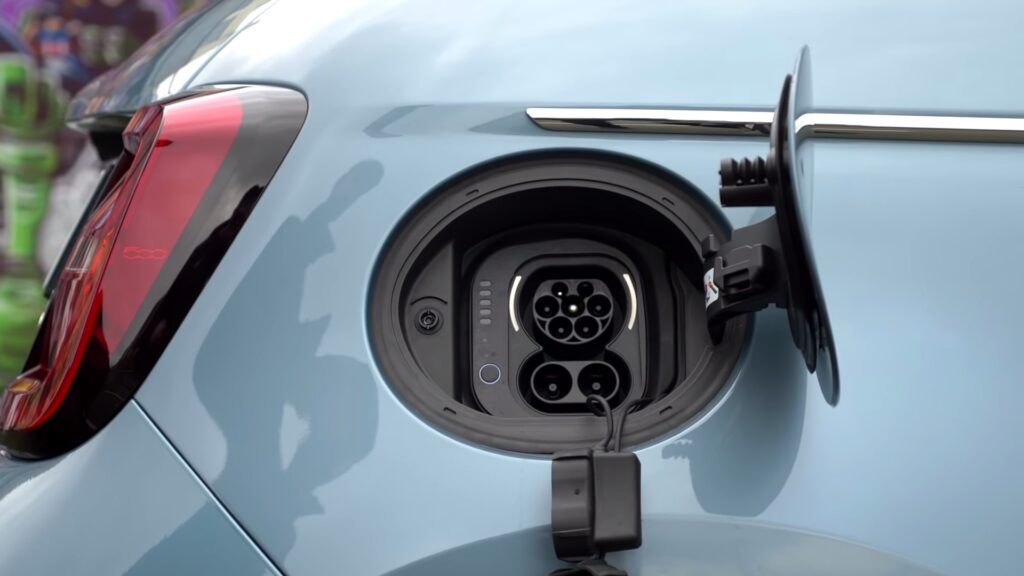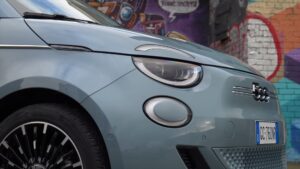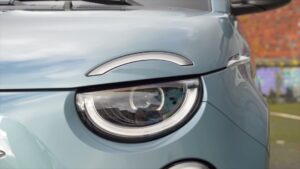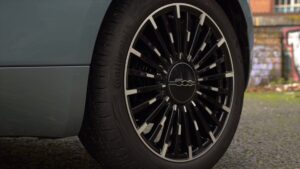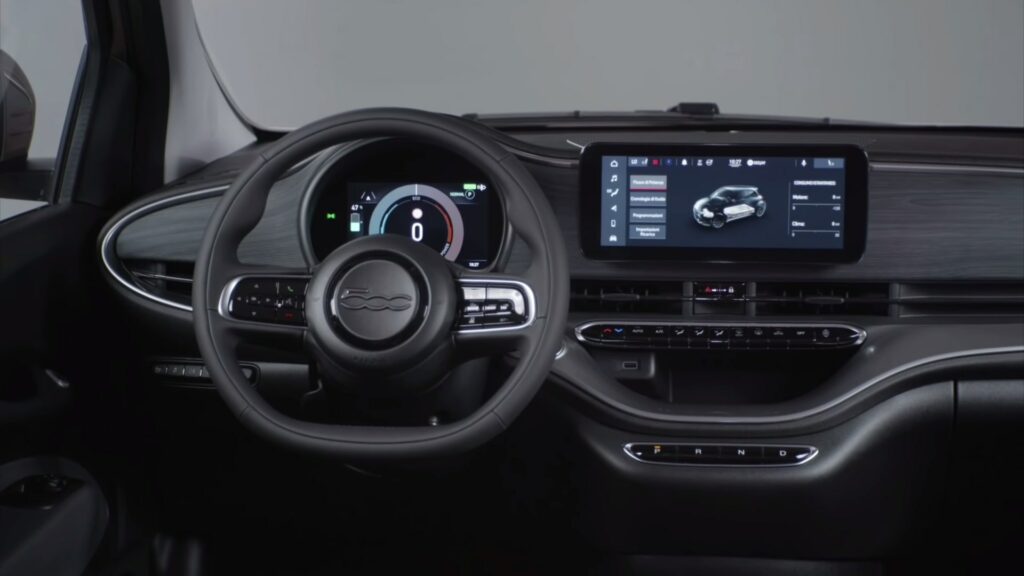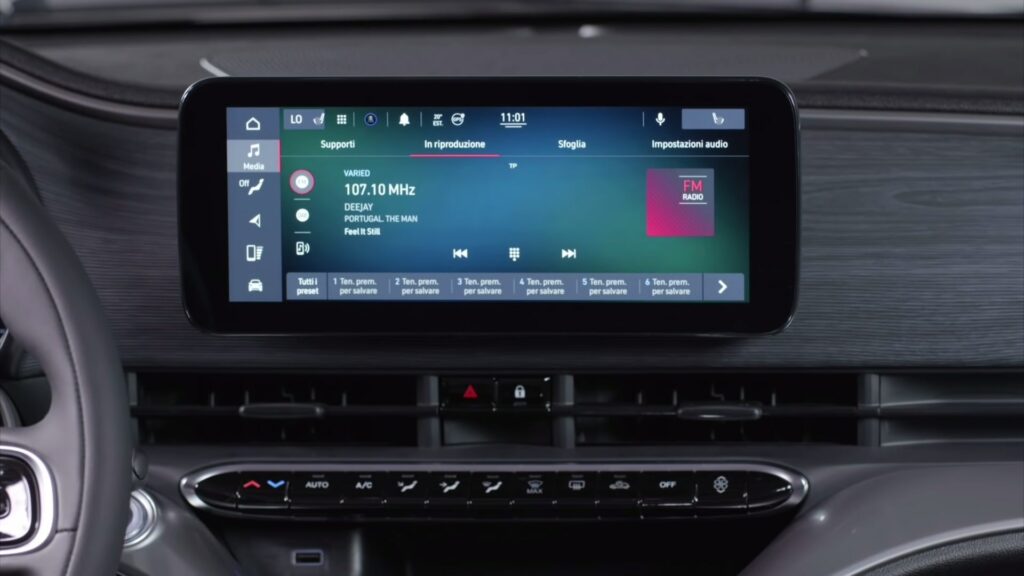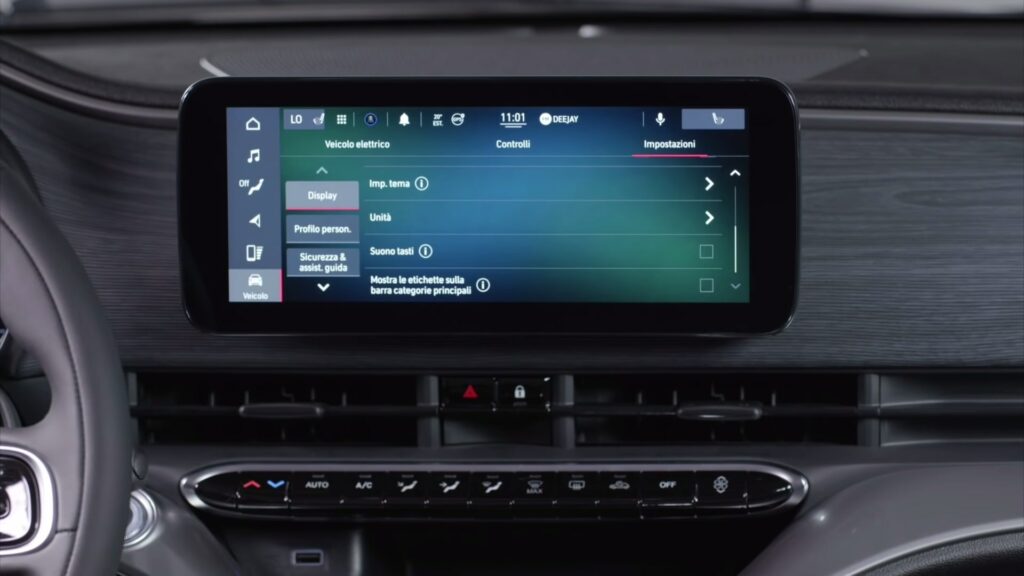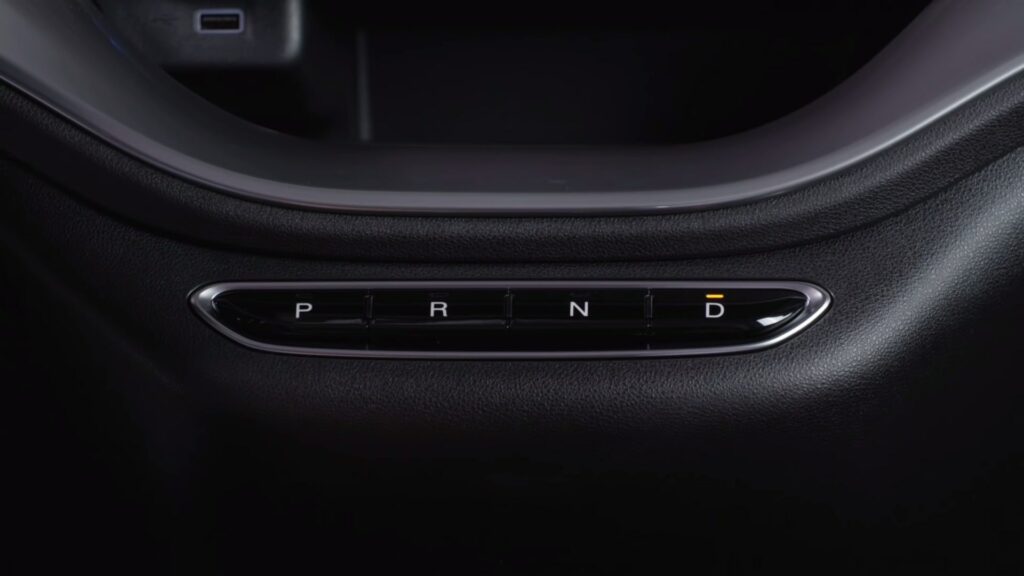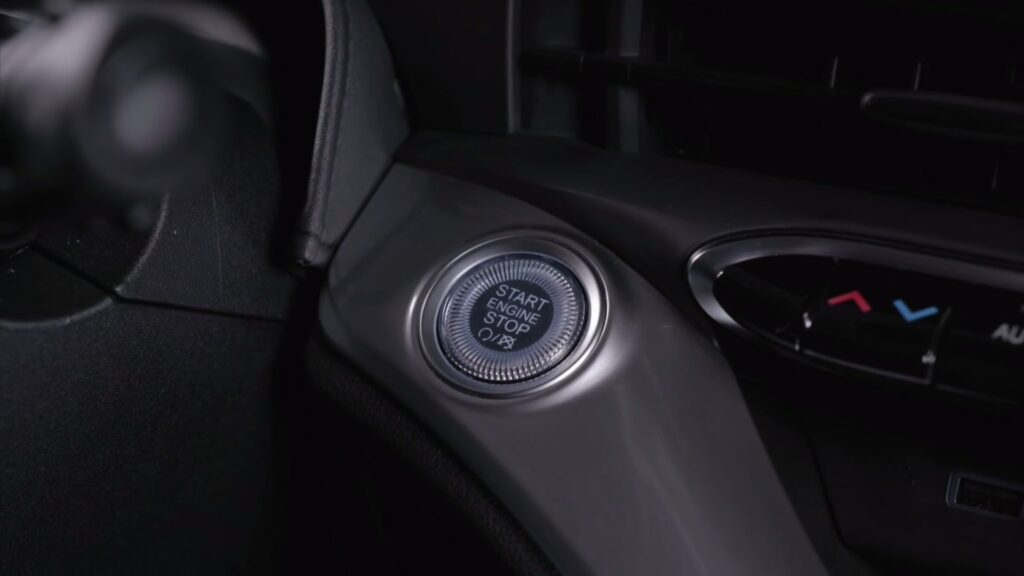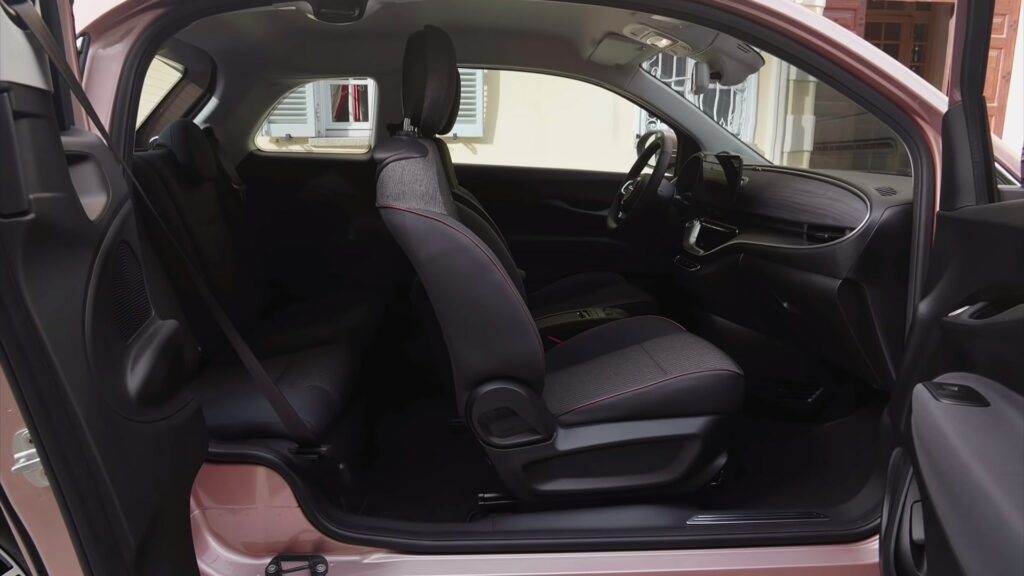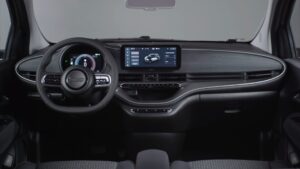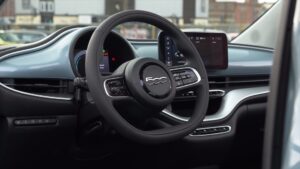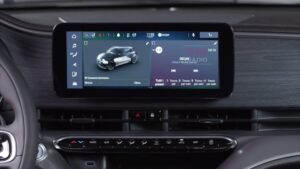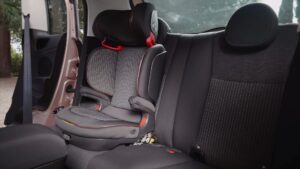Fiat 500e Hatchback 24 kWh
Cute car. This is the first association that arises when you meet the Fiat 500e electric car. Indeed, the first thing that bribes is the appearance of the electric car. It is stylish, bright, and compact – an ideal city car with an environmentally friendly character.
What does the Italian electric hatchback offer?

The Fiat 500e differs from its fuel-powered counterpart, which has long enjoyed enormous popularity, with only a few barely noticeable details: a slightly modified air intake grille, which in the electric version “does not smile” and a wider spoiler in the rear of the car.
The absence of serious changes was initially included in the idea of the company’s designers, who did not want to shift the emphasis too much on the environmental friendliness of the car, but only to further emphasize its “urban” character.
Inside, the Fiat 500e is also much the same as a traditional hatchback with an internal combustion engine. The driver’s dashboard is replaced by the Fiat 500’s traditional 7-inch LCD display, which in the electric version displays data specific to electric car operation: range, energy consumption, and battery charge status. Information about the selected gear, and the status of the telephone connection is also provided. The display indication and animation color can be selected according to driver preference. The updated Uconnect infotainment system is integrated into the instrument panel. It can be used to control the climate in the car, the stereo system, and navigation.

The front seats offer plenty of room for drivers of different sizes and heights. With a wide range of adjustments, it is possible to find the optimum fit with ample legroom. However, this should be done with an eye on the rear passengers, for whom the space is already very limited due to the batteries located in the rear of the car.
The trunk is frankly small. Even with folded-back seats its volume does not provide essential space for luggage.
Technical Specifications
The electric car is equipped with an 83 kW electric motor, 111 hp, and 200 Nm of torque. The power of the engine is transmitted to the front wheels through a single-speed gearbox. The car is powered by a 24 kWh lithium-ion battery. The dynamic characteristics allow the Fiat 500e to accelerate to 100 km/h in 9.1 seconds, which is one of the best performances in its class. The maximum speed of the electric car is 141 km/h.
The car is charged with a 6.6 kW charger that can fully charge the battery of an electric car from a 220-volt outlet in 4 hours.
Driving performance
The Fiat 500e electric motor is able to provide full torque immediately after turning on the ignition. The electric car accelerates very quickly and picks up at high speeds just as quickly. Like other electric cars, the Fiat 500e drives almost silently. The regenerative braking system works perfectly. The suspension is soft, but not devoid of sportiness. Control is informative, when driving on the highway the steering wheel gains “weight”, becomes more precise, and provides confident control over the motion.

Fiat 500e equipment
The electric car is well-equipped. The basic version of the car offers:
full electric package;
heated side mirrors;
height-adjustable multitudinous steering wheel;
cruise control;
leather steering wheel upholstery;
automatic dimming rear-view mirror;
navigation;
satellite radio.
In addition, the electric car has several premium packages that include an additional set of options.
Safety of Fiat 500e
The level of safety meets the highest standards of the modern automobile industry. The active safety package includes anti-lock brakes (ABS), vehicle stability on the road (ESP), and traction control. Passive protection is provided by a set of front and side airbags for front passengers, as well as knee airbags and active front head restraints. Parking sensors are included in the basic version of the car and automatically signal pedestrians in the danger zone when the silent car is approaching.
The Fiat 500e braking system provides full stopping of the electric car from 100 km/h at a distance of 40 meters.
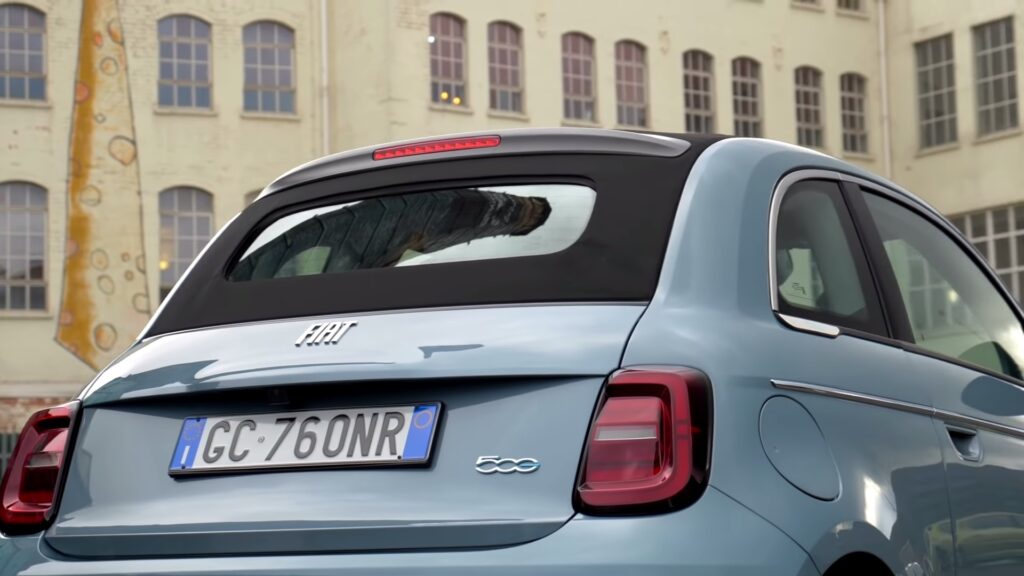
The Fiat 500e crash-test ratings according to Euro NCAP are exactly the same as those of its fuel-powered counterparts. The total score of the active and passive safety systems is four and a half stars. Having received the highest score for the safety of front passengers, the Fiat 500e has lowered the overall rating at the expense of low scores for the safety of rear seat passengers and pedestrians.
| Performance | |
| Acceleration 0 – 100 km/h | 9.5 sec |
| Top Speed | 135 km/h |
| Electric Range | 165 km |
| Total Power | 70 kW (95 PS) |
| Total Torque | No Data |
| Drive | Front |
| Battery and Charging | |
| Battery Capacity * | 23.8 kWh |
| Battery Useable* | 23.8 kWh |
| Europe | |
| Charge Port | Type 2 |
| Port Location | Right Side – Rear |
| Charge Power | 11 kW AC |
| Charge Time (0->165 km) | 2h45m |
| Charge Speed | 65 km/h |
| Fastcharge Port | CCS |
| FC Port Location | Right Side – Rear |
| Fastcharge Power (max) * | 50 kW DC |
| Fastcharge Time (17->132 km) * | 26 min |
| Fastcharge Speed * | 260 km/h |
| Energy Consumption | |
| EVDB Real Range | |
| Range | 165 km |
| Vehicle Consumption | 144 Wh/km |
| CO2 Emissions | 0 g/km |
| Vehicle Fuel Equivalent | 1.6 l/100km |
| WLTP Ratings | |
| Range | 180 km |
| Rated Consumption | No Data |
| Vehicle Consumption | 132 Wh/km |
| CO2 Emissions | 0 g/km |
| Rated Fuel Equivalent | No Data |
| Vehicle Fuel Equivalent | 1.5 l/100km |
|
Rated = official figures as published by manufacturer. Rated consumption and fuel equivalency figures include charging losses.
|
|
|
Vehicle = calculated battery energy consumption used by the vehicle for propulsion and on-board systems.
|
|
| Real Energy Consumption Estimation | |
| Real Energy Consumption Estimation between 97 – 207 Wh/km | |
| City – Cold Weather * | 154 Wh/km |
| Highway – Cold Weather * | 207 Wh/km |
| Combined – Cold Weather * | 176 Wh/km |
| City – Mild Weather * | 97 Wh/km |
| Highway – Mild Weather * | 159 Wh/km |
| Combined – Mild Weather * | 125 Wh/km |
|
Energy use for each trip will vary considerably depending on the driver and the conditions. Therefore, we have provided a range of estimates which can be useful in developing an understanding of the potential benefits of this technology. |
|
| Dimensions and Weight | |
| Length | 3632 mm |
| Width | 1683 mm |
| Width with mirrors | No Data |
| Height | 1527 mm |
| Wheelbase | 2322 mm |
| Weight Unladen (EU) | 1350 kg |
| Gross Vehicle Weight (GVWR) | No Data |
| Max. Payload | No Data |
| Cargo Volume | No Data |
| Cargo Volume Max | No Data |
| Cargo Volume Frunk | No Data |
| Roof Load | No Data |
| Tow Hitch Possible | No Data |
| Towing Weight Unbraked | No Data |
| Towing Weight Braked | No Data |
| Vertical Load Max | No Data |
| Miscellaneous | |
| Seats | 4 people |
| Isofix | No Data |
| Turning Circle | No Data |
| Platform | No Data |
| Car Body | Hatchback |
| Segment | B – Small |
| Roof Rails | No |
| EV Dedicated Platform | No Data |
Home and Destination Charging (0 -> 100%)
A public charging station is required to use the highest possible charging rate. The EVSE/charging station’s charging capacity affects how long it takes to fully charge the battery. The table below shows all possible options for fully charging the Fiat 500e Hatchback 24 kWh.
In Europe, plugging an electric car into an outlet is often as easy as plugging it into a household outlet, but there are differences from country to country. The table below shows the different ways to charge the Fiat 500e Hatchback 24 kWh, but in some countries some chargers may not be available.
Type 2 ( IEC 62196)

| Charging Point | Max. Power | Power | Time | Rate |
| Wall Plug (2.3 kW) | 230V / 1x10A | 2.3 kW | 12h15m | 13 km/h |
| 1-phase 16A (3.7 kW) | 230V / 1x16A | 3.7 kW | 7h45m | 21 km/h |
| 1-phase 32A (7.4 kW) | 230V / 1x32A | 7.4 kW | 4 hours | 41 km/h |
| 3-phase 16A (11 kW) | 400V / 3x16A | 11 kW | 2h45m | 60 km/h |
| 3-phase 32A (22 kW) | 400V / 3x16A | 11 kW | 2h45m | 60 km/h |
Fast Charging (10 -> 80%)
If you want to enjoy driving an electric car, one of the most important features to consider is the number of miles per hour the car can travel while charged. This is called the “range” of the car. All electric cars have a certain range, even if they are 100% charged. This is because they do not have an internal combustion engine to lean on if you need to drive a long distance.
Max. Power: The maximum power provided by the charging point
Avg. Power: The average power provided by the charging point during a session of 10% to 80%.
Time: the time it takes to charge from 10% to 80%
Speed: the average charging rate during the session of 10% to 80%
Combined Charging System (CCS Combo 2)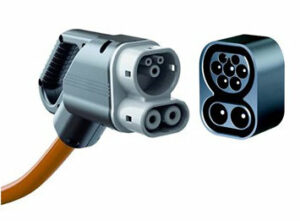
| Charging Point | Max. Power | Avg. Power | Time | Rate |
| CCS (50 kW DC) | 50 kW | 40 kW | 26 min | 260 km/h |
| CCS (100 kW DC) | 50 kW | 40 kW | 26 min | 260 km/h |
| CCS (150 kW DC) | 50 kW | 40 kW | 26 min | 260 km/h |
| Brand | Fiat |
| Model | 500e Hatchback 24 kWh |
| Body Style | Hatchback |
| Car Engine | electric |
| Motor power | 70 |
| Battery Energy, kWh | 23.8 |
| Power reserve (NEDC/EPA/WLTP), km | - / - / 165 |
| Level Charging (230/400/DC), hours | - / 2.45 / 0.26 |
| Electrical Acceleration, 0-100 km/h (0-62.1 mph) in sec | 9.5 |
| Top Speed, km/h | 135 |
